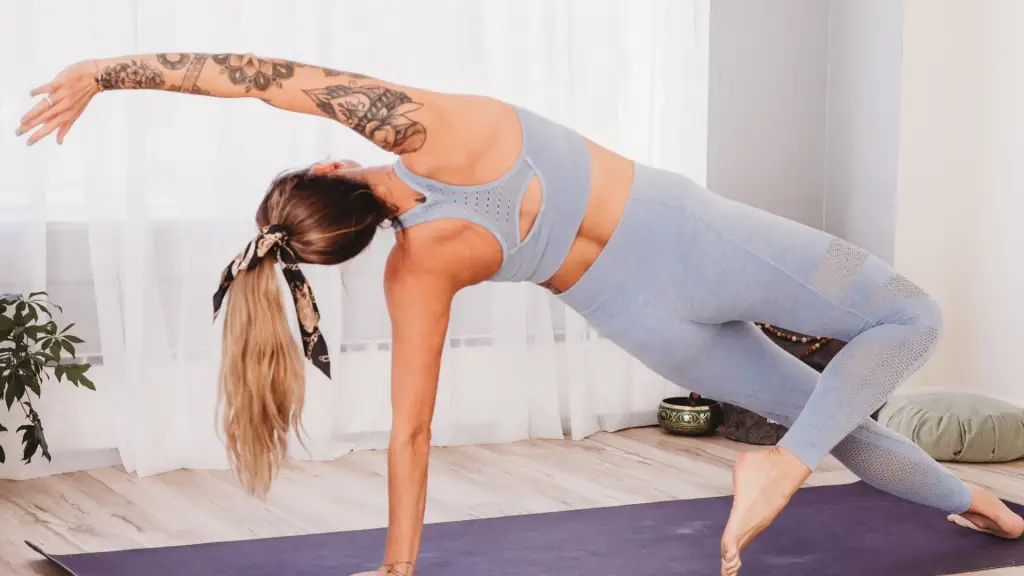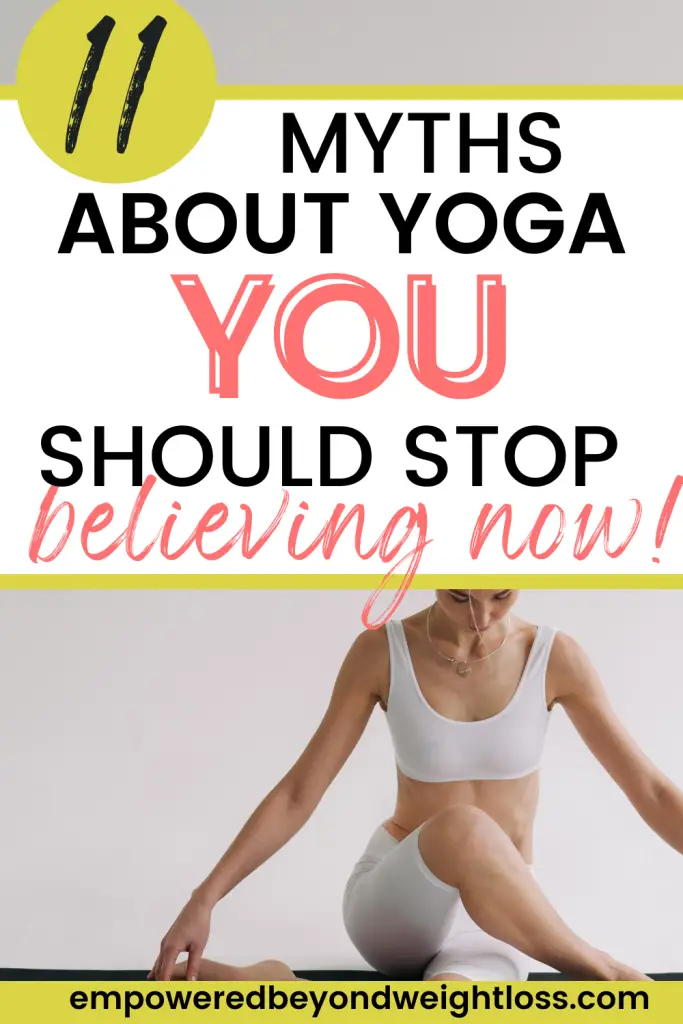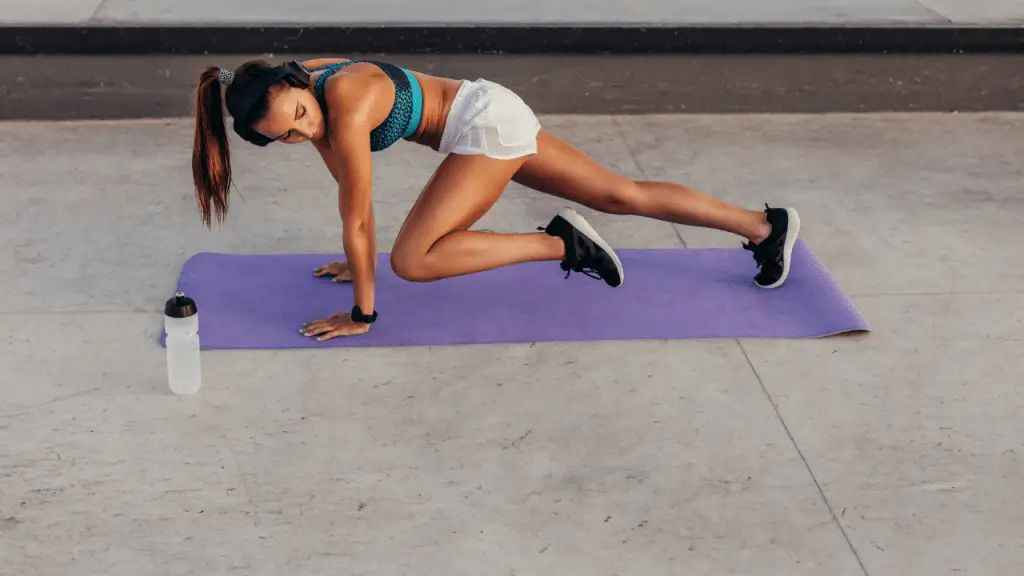Today, we are uncovering some of the top 11 myths about yoga that may keep you from getting in the best shape of your life after 40. I started doing yoga at 43 and got my 500-HR Yoga Instructor certification at 45. I had acquired all kinds of misconceptions about yoga over the years, and as I grew in my practice, I started uncovering the myths I had been believing. The way I perceived yoga may not be how you perceive it, but I think these myths are common enough, and if you are anything like I was, you will learn a lot from this article.
Myths About Yoga
The origins of yoga date back at least 5,000 years ago. Its roots can be traced to ancient India, where evidence of yoga-like postures and meditation have been found in ancient seals and sculptures. However, yoga’s exact origins are unclear and subject to much speculation. Yoga’s ancient origins, its traditions, and evolution over the years have led to many myths about the practice. In a sense, many “myths” can be true for some. It all depends on how you perceive it and do yoga, leading us to the first myth: Yoga is Yoga.
1. Yoga Is Yoga
What one person might consider yoga will make another say: no way, that’s not yoga! There are many ways to view the practice of yoga and many types of yoga.
First, let’s revisit some types of yoga I mention in my post Starting Yoga At 40 Or Later: Everything You Need To Know.
- Hatha: Hatha yoga tends to be slower and more gentle. You will be holding some basic yoga poses in sequence.
- Ashtanga: With Ashtanga yoga, you will follow specific sequences to challenge your strength, endurance, and flexibility. It will also require more focus as you practice following your breath.
- Vinyasa: Vinyasa yoga is similar to Hatha yoga in that it strings different poses together. However, the pace of Vinyasa yoga is faster, and it emphasizes connecting your breath to your movements. Vinyasa yoga is less intense than Ashtanga yoga as it typically doesn’t challenge your endurance as much.
- Yin: Yin yoga is a much slower type of yoga. Typically, you will hold the poses for anywhere between 3-5 minutes.
- Restorative: Both yin and restorative yoga require you to stay in poses for a few minutes. However, restorative yoga uses props to keep you comfortable. The purpose of restorative yoga is to calm the central nervous system. Yin yoga may be used to increase your flexibility so that you will experience some discomfort.
Yogis who love the spiritual traditions of yoga might say that most Western yoga isn’t yoga. On the other hand, one who practices Westernized yoga emphasizing breath and mindfulness may say that yoga drills purely meant for increasing strength and flexibility are not yoga. My perspective is this: there are many ways to do yoga, and let`s not dismiss those with a different approach.

2. You Don`t Have to Be Flexible to Do Yoga
You will often hear that one because practicing yoga does, in itself, make you more flexible. However, my experience as a woman over 40 who started as a very inflexible yogi is this: if you are stiff like I was, you will not be able to follow most yoga flows that are challenging enough to be interesting and you will find yoga boring. Do yourself a favor and focus on increasing your flexibility first. That`s why I created my Full-Body FlexibilityTransformation Progam.
My Full-Body Flexibility Program is the ultimate step-by-step yoga for flexibility and strength for beginners program.
Stage one focuses on building your flexibility gradually for the splits. Stage two includes backends to your training schedule, and stage three adds more advanced yoga poses for flexibility, like King Pigeon and the standing splits.

3. Yoga is Not Physically Demanding
I believed this myth about yoga before getting started in my forties. I thought yoga was mostly about stretching. I didn`t think it could be physically demanding. Maybe mentally, but not physically. Then, I decided I wanted to strengthen my core (after losing 30 lbs using intermittent fasting) because I looked like I had no waist. I stumbled on a yoga instructor with a yoga-based core program, which I purchased. That’s how I discovered a different side of yoga! A side that is extremely physically demanding and fun!
Yoga can be physically demanding because it requires the use of various muscle groups and a combination of strength, flexibility, balance, and endurance. Some of the most physically demanding poses, such as arm balances, inversions, and backbends, can challenge even the fittest individuals.
In addition, certain styles of yoga, such as vinyasa or power yoga (even the slower-paced Hatha yoga will challenge your cardiorespiratory endurance, muscular strength, endurance, and flexibility). The continuous flow of movement from one pose to the next can elevate the heart rate and challenge the body’s endurance.
Furthermore, yoga often requires maintaining a pose for an extended period, which can lead to fatigue in the muscles being used. This is especially true for more challenging poses that engage multiple muscle groups, such as dolphin pose or plank.
While yoga can be physically demanding, it can also be modified to meet your needs and abilities by using props, modifying poses, or taking breaks as needed.
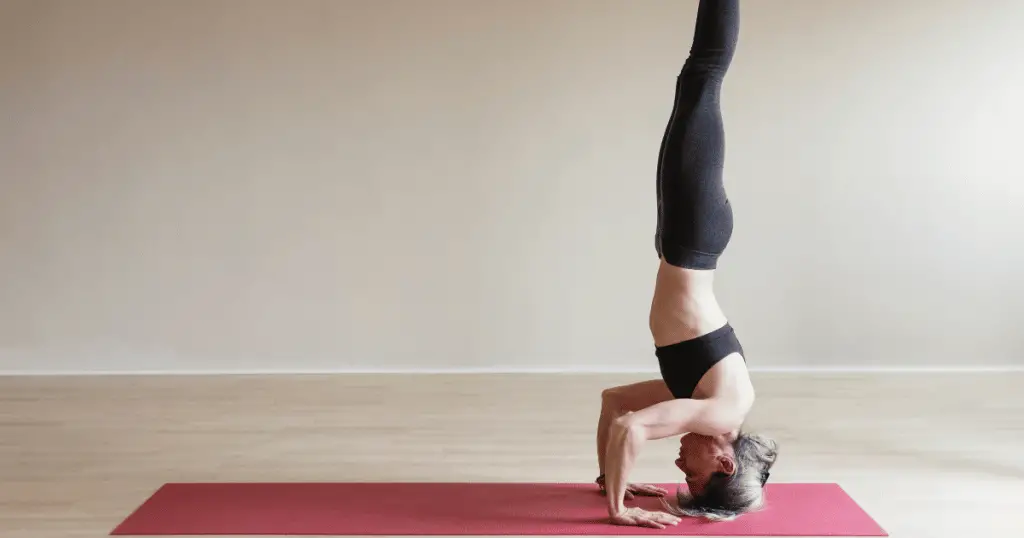
4. You Need to Practice Yoga Mindfully
Of all the myths about yoga, it is the most common one because it is true in some ways. However, notice how I say YOU NEED TO. That’s the part that isn’t true. You will benefit from practicing yoga mindfully, sure! Now that I am strong and flexible enough, I tend to focus more on practicing and feeling the poses in my body. As a beginner, though, I would mainly stretch and do yoga drills while listening to music and without putting much emphasis on my breath or other elements of mindful practice.
5. Yoga Is Boring
This is one of the myths about yoga that not everyone believes but that many people who already love fitness do believe. I know because I used to be one of them. I have been working out for over a decade and was previously certified as a NASM fitness trainer. I worked out because I wanted to feel my workouts and be sore. I wanted to be challenged but didn’t know yoga could do that.
The first time I did yoga was a bunch of Sun Salutations. I thought it was boring, and it seemed to me that yoga was a mostly meditative activity, and I thought meditating was boring. I was so wrong! Yoga is the perfect activity because it is challenging in so many ways! Plus, as you advance, you can tackle more advanced poses that take you to the edge of your abilities. It is rewarding and fun!
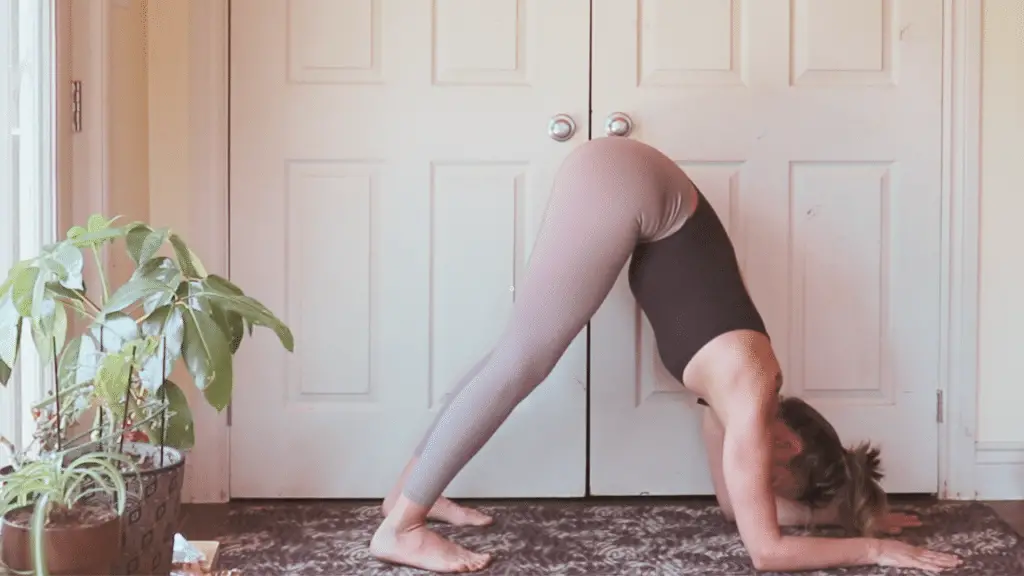
6. You Can’t Lose Weight Doing Yoga Only
This myth about yoga probably stems from the idea that yoga isn’t physically demanding enough, which we have already addressed. Since we now know that yoga builds muscles and cardiovascular endurance, we know it will help you lose weight. But there is more to it than that! Even restorative yoga can help you lose weight as you improve your mindfulness.
Read Yoga for Weight Loss: 10 Yoga Poses for a Flat Belly and try out my follow-along yoga routine for weight loss.
7. Doing Yoga Summons Evil Spirits
Oooh! This is one of the myths about yoga that bugs me the most! Coming from religious circles myself, I have heard it so many times! The earliest written record of yoga is found in the ancient Indian scripture called the “Rig Veda,” which dates back to around 1500 BCE. The Vedas are a collection of hymns, prayers, and rituals considered sacred by the ancient Hindu people. Consequently, many people view yoga as a pagan religion. The Vedas do not explicitly mention yoga; they contain references to meditation and other spiritual practices considered to be the foundations of yoga.
It is widely believed that yoga was developed as a way to bring balance and harmony to mind, body, and spirit. The goal of yoga was to help individuals connect with the divine and attain a state of inner peace and contentment. This idea is reflected in the word “yoga” itself, which comes from the Sanskrit word “yuj,” which means “to unite.”
However, various cultures and civilizations have evolved and influenced yoga over the centuries. During the medieval period, yoga became associated with the Hindu religion and was mainly practiced by ascetics and holy men. In the late 19th and early 20th centuries, yoga was brought to the Western world by Indian teachers who sought to spread its teachings and benefits. Today, yoga is a global phenomenon practiced by millions of people from all walks of life. In the Western world, most practitioners don’t embrace anything particularly spiritual. In fact, during my 500-hour yoga teacher training, I was not taught anything spiritual or even meditative.
Then, I sometimes hear something to the effect that the yoga poses themselves are meant to conjure the spirit world (even if you don`t mean to). My response has been that many yoga poses are part of daily living, like standing up (Mountain Pose) or lying down (Corpse Pose). I guess everyone is summoning evil spirits daily! To me, the word yoga is like a tribute to how holistic a practice of yoga can be. It involves your balance, strength, flexibility, endurance, and mindfulness.
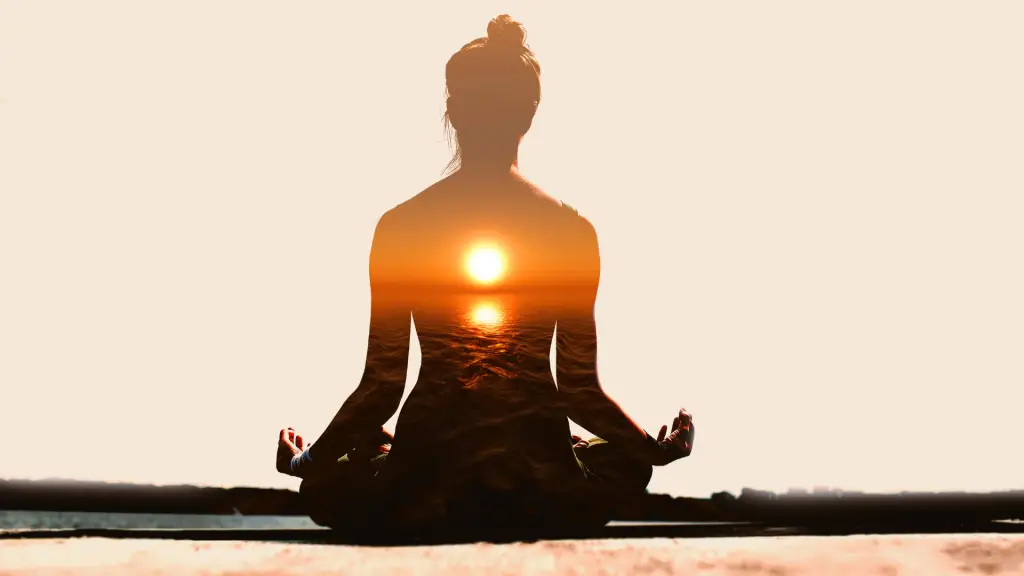
8. Yoga Poses Involve Complicated Cues
The first time I wanted to learn about yoga, I was 18 years old! I got a library book (that’s what people did back then!) and discovered that I couldn’t implement the complicated cues of all the poses. In a sense, yes, you can learn how to integrate yoga poses more effectively with various cues that may seem complicated. That said, beginners can benefit from all the yoga poses without doing all the “proper alignment.” As you learn to integrate your body through the yoga poses and flows, the goal isn’t to get everything “right.” Instead, it is to learn to feel the poses in your body.”
Besides, the most important cues can be summarized in a few key points that will transpire in all of the yoga poses. They are simple:
- Draw your shoulder blades back and down.
- Press your belly button against your spine.
- Pull your hip bones into your hip sockets and your arm bones into your shoulder sockets.
- Activate your whole core by pulling the energy through the sole of your feet, through your pelvis (you will be lifting your kneecaps), and up to your chest.
- Tuck your chin in slightly.
Learn to feel these cues in all the poses. That’s all!
9. Practicing Yoga Requires a Lot of Time
That is one of the myths about yoga that can be true in certain cases. The main reason many people envision yoga as an activity you need to set a lot of time aside is that many yoga classes are an hour and a half long. And yes, sometimes, doing a long yummy yoga flow feels amazing! However, you could devote only 15-30 minutes a day to your yoga practice and experience impressive benefits| That`s what I did! Before I became an addict and started practicing for at least one hour daily, I devoted only 30 minutes a day to my sessions. And that was enough to enable me to go from this to that:

Want to learn more about my yoga transformation? Read 1-Year Yoga Transformation: Before and After Pictures,
10. You Can’t Get Ripped Doing Yoga
This myth about yoga is related to the idea that yoga isn’t physically demanding. Even so, some may agree that it will improve your cardiovascular endurance without viewing yoga as an appropriate exercise to build muscle. Well, I can tell you that you will absolutely build muscle if you practice yoga regularly. As I mentioned, I wanted to define my waist through core exercises and did it exclusively with yoga. Furthermore, I noticed that my arms and shoulders became more defined (even though I had been lifting weights before). Lastly, I didn’t think yoga would be enough to strengthen my glutes and leg muscles, so I went to the gym for a few months for “leg day.” I ended up stopping going to the gym because I didn’t like going to the gym.
A year after stopping the gym, I found that my legs and glutes were getting stronger simply through yoga. Now, if you are a guy and you want to build a six-pack, you may think that you need more than yoga. Honestly, maybe you do. I can say this: I follow several male yoga teachers who have a six-pack and are very muscular. I don’t know if they combine their yoga practice with other muscle-building activities, but I guess they don’t.
To learn more, l recommend you read this helpful article entitled Can Yoga Build Muscle? You Bet!.
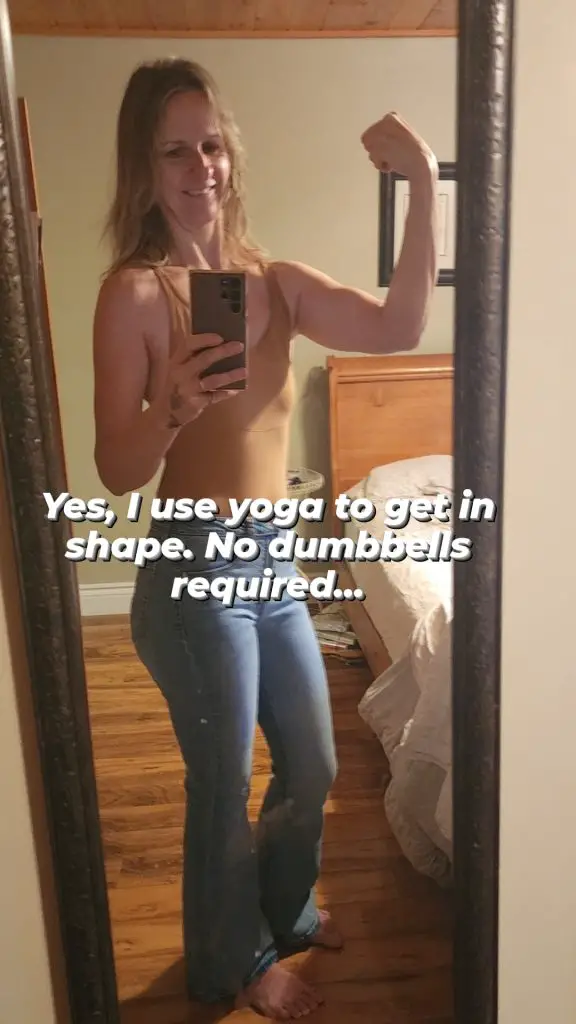
11. You Need Tattoos to Be a True Yogi
Ok, I know! That`s not funny! Of course, you need tattoos to become a true yogi!
